DJI Action 3 VS GO PRO 10, DJI OSMO Action and DJI Action 2: Who Wins?
Several days ago, DJI announced its brand-new action camera—DJI Action 3, which comes less than a year after the Action 2 release, with a more powerful battery and better image quality packed in an integrated-design housing.
Then, how about its improvements over the DJI OSMO Action and Action 2, or advantages over its competitor—Go Pro 10? Let’s dive into the article to find the answer.
Design and Handling
The DJI OSMO Action is not much different from the GO PRO 5 and GO PRO 6, positioned as a traditional action camera.
While the Action 2 breaks into a new market with a novel design, providing services to a wider range of customers including vloggers and other users. Moreover, from this product onwards, the Action line has been officially separated from the OSMO series which further illustrates DJI's ambition in the field.
Taking the advantages of its predecessors, the Action 3 is ready to take the lead in the action camera market.
The Action 3 packs a 1/1.7-inch imaging system with a wide 155-degree field of view inherited from the Action 2. Innovatively, it ditches the magnetic modularity of the DJI Action 2, instead reverting to the original Osmo Action appearance. All but, it still owns Action 2’s quick-release structure, whose accessories are therefore compatible with Action, Action 2 and Go Pro.
Generally, in addition to the Action 2 with a metal body and vertical appearance, the Action 3, GO PRO10 and OSMO Action are all relatively close in appearance, equipped with front and rear screens for displaying images. The difference lies in that the front screen of the Action 3 is touchable, a little more convenient than other products.
Then moving to the lens part, compared with the square looking of the GO PRO 10, the Action 3 further increases the size based on OSMO Action's round one for better protection. In addition, there is a color sensor hidden behind Action 3 ‘s "O" logo, which can effectively detect color temperature and strobe to ensure accuracy.
Meanwhile, in terms of external material, the GO PRO10 still adopts a paint-covered housing, while the Action 3 and OSMO Action use a hard coating for better durability.
On the back, except for the vertical Action2, the shape and size of the other three products are very similar. Specifically, the GO PRO10 is taller while the DJI Action 2 and Action 3 are longer.
From the bottom, except for the OSMO Action, which has a battery compartment, the other three products adopt a quick-release structure, which makes them easier to connect and expand.
The GO PRO 10 uses its own connection ports, which are solid, but still slightly less expandable. Of course, it’s highly recommended for all of them to add a 1/4-inch screw port, after all, which for photographers, is most used!
At the top, all four products have a large shooting button (Action 2's button also functions as a power button). For OSMO Action there is an additional power switch on the left side.
On the right side, the Action 2 has another power/shooting button. The Action 3 and GO PRO 10 have their battery compartment there (USB and memory cards of the GO PRO 10 are also hidden in the battery compartment), with a special cover, so theoretically more protective.
On the left side, the Action 3 also allocate the power button in the same place as GO PRO 10, for GO PRO users getting started quickly. In addition Action 3 has added a waterproof cover to protect the USB port.
Theoretical test
001 latitude
Turning on Action 3's D-Cinelike Gamma curve and GoPro 10's "flat" color mode, we shot a video of the tolerance scale within negative 3 to positive 3 stops, with exposure restoration and screenshot analysis through post-production software.
The Action 3 was able to pull back from -3EV to +2EV, and at +3EV, nearly half of the highlight detail was lost.
The GoPro 10 is able to pull back from -3EV to +1EV, with some detail lost from +2EV onwards, and most detail lost at +3EV, with latitude and dynamic range only covering -3EV to +1EV.
In short, the Action 3 will have better highlight detail protection, while the GoPro 10 is somewhat lacking in the face of bright light. On this front, the Action 3 beats the GoPro 10 to the punch.
002 sensitivity
Action 3 has a sensitivity range of ISO100-12800, one stop more than that of the GoPro 10.
Let's take a look at the detail performance of these two machines. After ISO800, it is visible to the naked eye.
Next, we will look at the dark performance of these two machines.
As you can see, the dark performance of these two machines is still good, within ISO1600, the dark images of both machines are relatively pure, with good image quality performance.
Until after ISO3200, the GoPro 10 showed a slight noise, while the Action 3's image quality decreased, but the control of noise was better, and from the actual picture, there was basically no noise and the picture was quite pure.
In the actual video shooting, the Action 3 and the GoPro 10 are basically at the same level of performance in terms of details and darkness, and they are on par. The Action 3 has one more stop of sensitivity, and for the high sensitivity of the screen control, so it can have a better application in the extreme environment.
003 stabilization
With DJI Action 3, GoPro 10, Action 2, and OSMO Action put in the same level via the LENNON master arm, we tested their stabilization.
Settings: DJI Action 3 and Action 2 were turned on Super Stabilization, GoPro 10 was turned on Enhanced Stabilization, and OSMO Action was turned on RockSteady Stabilization.
In the case of walking on the flat ground, the four gears showed different degrees of undulation, with DJI OSMO Action having the greatest degree of undulation.
In the case of running on the flat ground, the feeling of holding Action 3 and Action 2 is quite steady, whereas GoPro 10 and OSMO Action have relatively obvious undulations.
In the case of walking up the ladder, all four cameras have a good stabilization performance, without visible sense of ups and downs.
In the case of running up the ladder, the GoPro 10 has visible undulations; and the OSMO Action becomes even worse.
In general, it seems that among the four cameras, DJI Action 3 and Action 2 have the best stabilization performance; GoPro 10 is more suitable for slow movement scenes; OSMO Action is not particularly ideal for stabilization performance because of its outdate processing chip.
004 audio reception
The novel Action 3 added MICs on the right, left and at the bottom, supporting omnidirectional audio adjustment.
With Action 3's WIND NOISE reduction mode on, its radio sound remains relatively good, with thick vocals and almost no excess noise. The GoPro 10's vocals were a little muddy and lack of the layered feeling. The Action 2 is almost identical to that of the Action 3 thanks to similar mic array. OSMO Action is old though, its sound quality is still relatively guaranteed.
005 image quality
The following files shot in RAW format are transformed into JPEG for the test.
As you can see, setting the automatic white balance and shooting in the same scene, Action 3 looks warmer and GO PRO10 is cold-prone.
In centers, DJI Action 3 is richer in layers, and more saturated in color. The GO PRO10, on the other hand, shows serious post-production traces. At corners, the Action 3 has somewhat dropped in image quality, while the GO PRO10 is slightly better. Overall, we conclude that the image quality of DJI Action 3 is a bit better.
The Action 3 has a single RAW file size of 23.5MB to 24MB and a single JPG file size of 3MB to 4MB, while the GoPro 10 has a single GPR file size of about 19MB and a single JPG file size of 8 to 9MB. But since the DJI Action 3 has larger files which helps it to store more information.
006 bit stream
At 4K 60P and 4K 120P, Action 3's highest bitstream is reaching 130Mbps, and only 94.7Mbps at 4K 30P.
The GoPro 10, on the other hand, has a maximum bitstream of 100Mbps, appearing at 4K 30P, 99.6Mbps at 4K 60P, and 99.4Mbps at 4K 120P.
Although the difference in maximum bitstream between the two cameras is 30Mbps, which is too small to have much impact on image quality and storage in actual use.
007 FOV
The DJI Action 3 packs a wide 155-degree field of view. Turning on its Super-wide angle and GoPro 10’s SuperView mode.
In contrast, the Action 3 has a much wider angle of view than the GoPro 10, allowing for more subjects to be captured in a single frame. The SuperView of the GoPro 10 is almost as wide as the Action 3's wide angle.
Verdict
From the analysis of the four products, it’s not hard to find DJI’s ambition, who in addition to using products such as the Action 2 to access to the VLOG and general user market, then utilizes the Action 3 to return the field of action camera with appropriate combination of designs of Go pro and advantages of its own products.
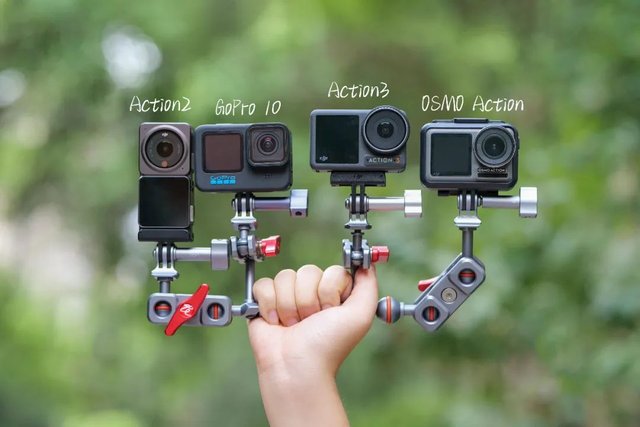

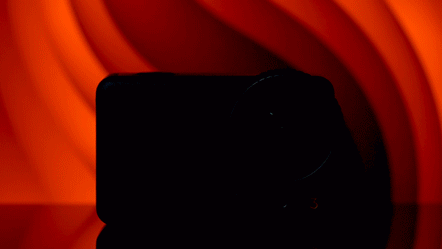.gif)
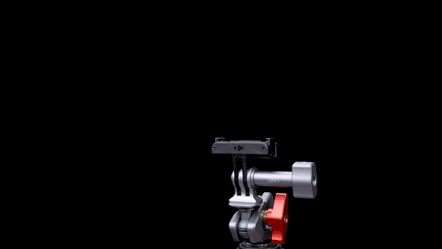.gif)
.jfif)
.jfif)
.jfif)
.jfif)
.jfif)
.jfif)
.jfif)
.jfif)
.jfif)
.jfif)
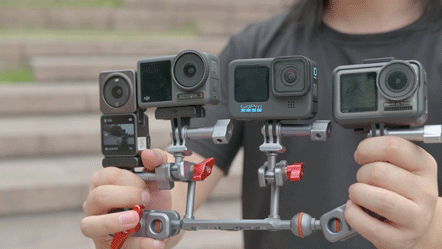.gif)
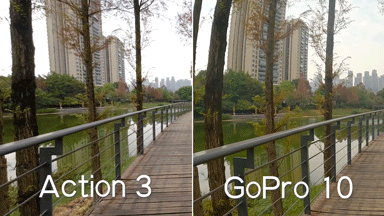.gif)
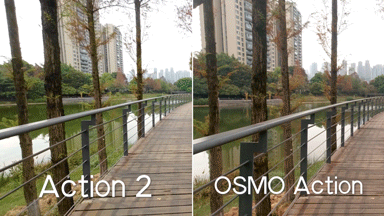.gif)
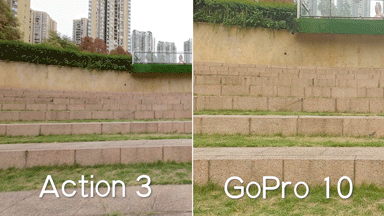.gif)
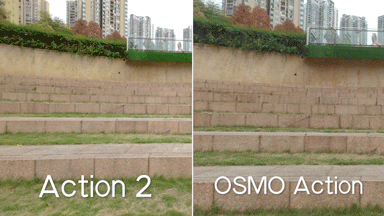.gif)
.jfif)
.jfif)
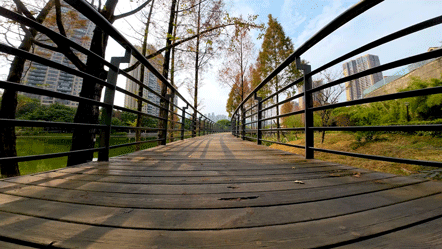.gif)
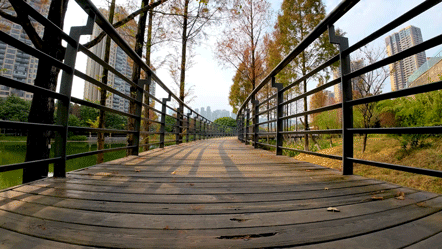.gif)
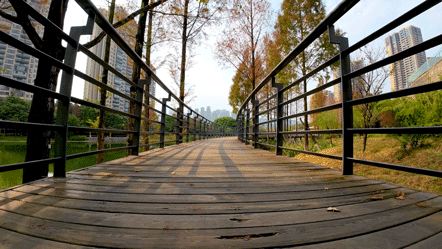.gif)
I had the same debate before a trip, and what helped me decide was checking samples on insta360.com. The vids there showed different use cases way better than just looking at specs. I liked seeing how they handled motion and light changes. Sometimes specs don’t tell you how it actually feels to shoot or edit stuff, so seeing raw footage really made a difference for me.